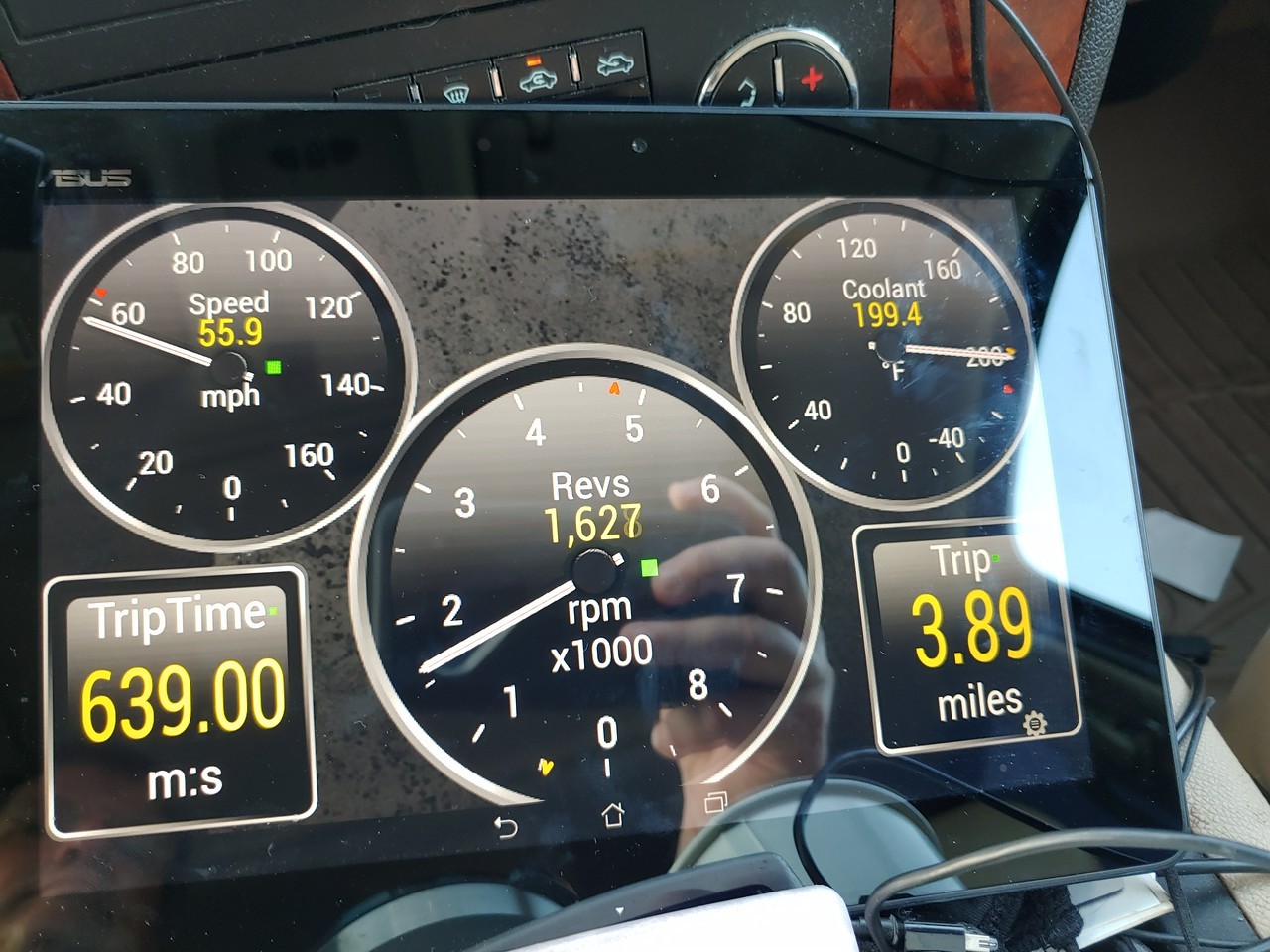Are you looking to modernize your car’s dashboard without breaking the bank? In the world of automotive DIY and budget-friendly modifications, using a tablet as a digital gauge cluster connected via OBD2 is gaining traction. But is it a good idea? Let’s dive into the pros and cons, inspired by a lively discussion among car enthusiasts.
The Allure of the Tablet Gauge Cluster
Imagine replacing your traditional, sometimes outdated, gauges with a sleek tablet displaying real-time data directly from your car’s computer. This is the promise of a tablet gauge cluster. Connect an Android tablet to your car’s OBD2 port – the same port mechanics use to diagnose issues – and you can monitor everything from engine temperature and RPM to speed and even fuel consumption, depending on your vehicle.
Enthusiasts are drawn to this setup for several reasons:
- Cost-Effective: Compared to purchasing and installing individual aftermarket gauges, a tablet you might already own, combined with a cheap OBD2 Bluetooth adapter, is significantly cheaper.
- Customization: Apps like Torque Pro offer a high degree of customization. You can choose which gauges to display, their layout, and even create custom dashboards tailored to your specific needs and preferences.
- Versatility: Beyond just gauges, tablets can run other car-related apps, navigation, music, and more, turning your dashboard into a multi-functional hub.
- Modern Look: A tablet dash can instantly give an older car a modern, high-tech feel.
Potential Pitfalls: Is it Bulletproof?
While the concept is appealing, there are valid concerns to consider, as pointed out by users experimenting with tablet gauges:
- Glare and Visibility: Tablet screens can suffer from glare, especially in direct sunlight, making it hard to read the displayed information.
- Heat Sensitivity: Cars can get extremely hot, especially in summer. Standard tablets aren’t designed for these temperatures and prolonged exposure to heat could affect their performance and longevity.
- Connectivity Issues: Wireless OBD2 adapters can sometimes suffer from connection drops, leading to intermittent data display.
- Reliability for Critical Data: For racing or performance driving, the reliability of a tablet-based gauge cluster for critical data like oil pressure or water temperature might be questioned by some, compared to dedicated, hardwired gauges.
- Fuel Level Accuracy: As one user noted, fuel level data might not be reliably transmitted through OBD2 in all cars, especially older models.
Making it Work: Tips and Tricks
Despite the challenges, many users have successfully implemented tablet gauge clusters. Here are some tips gleaned from their experiences:
- Screen Protection: Use matte screen protectors to minimize glare. Consider building or buying a sunshade to further improve visibility.
- Heat Management: For occasional use or racing events, heat might not be a major issue. For daily driving, consider removing the tablet when parked in direct sunlight. For more permanent setups, explore tablets designed for car use or consider methods to ventilate the mounting area.
- Reliable OBD2 Connection: Opt for a wired OBD2 adapter for a more stable connection, especially for critical applications like racing. Some users have reported success with wired connections for increased reliability.
- Power Supply: Hardwire a reliable and fused 12V to 5V USB power adapter to ensure continuous power to the tablet.
- App Choice: Torque Pro is a popular and well-regarded app for OBD2 data display. RaceCapture is mentioned as a more advanced, albeit pricier, option for data acquisition and timing, especially for racing scenarios.
- Mounting Solutions: Use robust mounting solutions like strong Velcro or custom mounts to securely fasten the tablet to the dashboard. Ensure easy removal for security and temperature management.
Dedicated Units vs. DIY Tablet: Alternatives to Consider
While DIY tablet setups are cost-effective, dedicated hardwired OBD2 gauge display units are also available. These units, like the one shown above, offer an all-in-one solution, often designed for car environments with better glare resistance and potentially higher reliability. However, they may lack the customization and versatility of a tablet.
The Verdict: Is a Tablet Gauge Cluster Right for You?
For budget-conscious enthusiasts, racers needing temporary dashboards, or those wanting a customizable and modern look, a tablet gauge cluster is a compelling option. It’s not without its challenges, but with careful planning and implementation, many of these can be mitigated.
If you prioritize ultimate reliability for critical engine data or need a permanent, maintenance-free solution, dedicated gauge displays might be a better choice.
Ultimately, the best approach depends on your needs, budget, and how much DIY tinkering you enjoy. Have you experimented with a tablet gauge cluster? Share your experiences and tips in the comments below!
